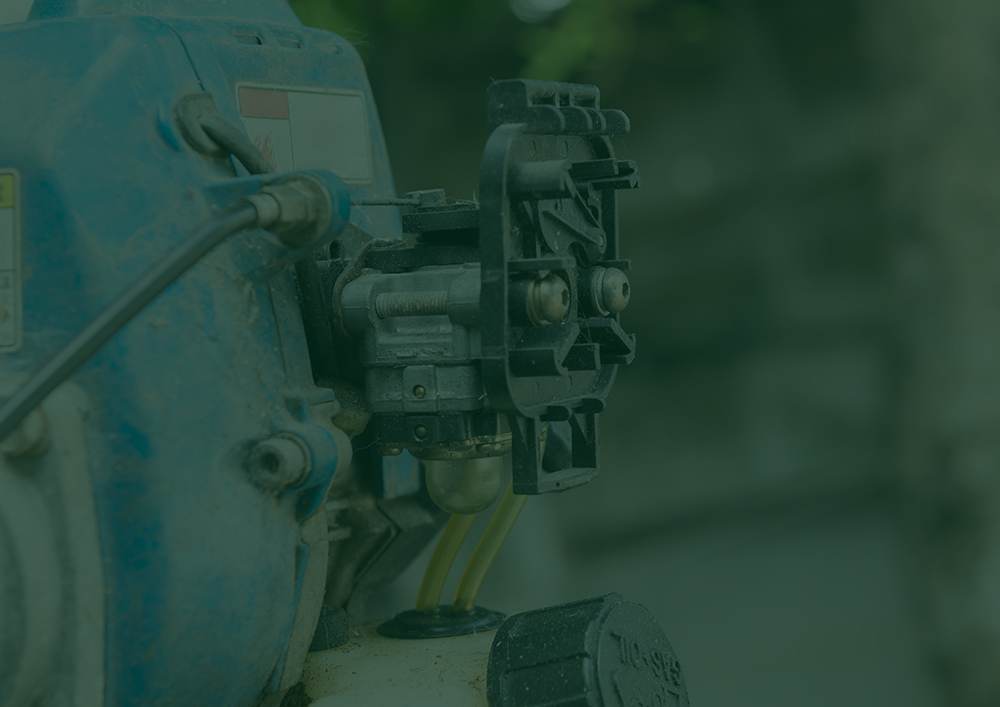Spring is in the air, and that means it’s time to get your lawn mower ready for action. A well-tuned mower doesn’t just make your lawn look great—it saves you time, money, and frustration throughout the mowing season. A yearly service ensures all components are in top shape and extends the lifespan of your mower.
DIY vs Professional Services
If your mower has persistent issues despite basic maintenance, professional servicing can save time and prevent further damage. Routine maintenance can be done at home, but complex repairs are often best left to professional lawn mower repair technicians. If you need more tips or have additional questions, we welcome readers to use our DIY with Expert Help services for extra guidance from seasoned professionals.
Why Spring Lawn Mower Maintenance Is Important
Preventing Costly Lawn Mower Repairs: Neglecting maintenance can lead to expensive breakdowns. A seasonal tune-up can catch small issues—like a worn belt or clogged filter—before they turn into expensive repairs later.
Ensuring a Cleaner, Healthier Lawn: A well-maintained mower provides an even cut, preventing damage to grass and promoting uniform growth. Dull blades or a poorly running engine can tear grass instead of cutting it, leaving your lawn vulnerable to disease and weeds.
Extending the Lifespan of Your Mower: Regular maintenance helps prevent engine damage, helping your mower last longer and perform efficiently. Fresh oil, a clean carburetor, and a sharp blade reduce wear and tear, ensuring your investment lasts season after season.
When to Perform a Lawn Mower Tune-Up
Before Mowing Season: Perform an annual tune-up before the first mow of the season, ideally in early spring. March or April gives you a head start so you’re ready when the mowing season kicks off.
Indicators Your Mower Needs a Tune-Up: Below are some indicators that it’s time to give your mower some attention. It’s key to address these issues before they worsen:
- Difficulty starting
- Uneven cutting
- Stalling during operation
- Excessive vibration or unusual noises
How Seasonal Changes Affect Lawn Mowers: Winter storage can leave your mower with stale fuel, rusty blades, or clogged parts. A spring tune-up helps manage these issues.
Step-by-Step Lawn Mower Tune-Up Checklist
Here are some of the most essential steps to consider when performing spring lawn mower maintenance.
Cleaning Your Lawn Mower
Regular cleaning helps prevent clogs and extends the life of your mower. Keeping your mower free of grass clippings, dirt, and debris prevents buildup that can affect performance. Before cleaning, always turn off the mower and disconnect the spark plug or battery for safety. Use a brush or compressed air to clear debris from the deck, blades, and air vents.
Inspecting and Replacing the Lawn Mower Air Filter
A dirty air filter chokes your engine, reducing power and fuel efficiency. The mower struggles and sputters.
Choosing the Right Air Filter for Your Mower Model: Check your owner’s manual for the correct filter type.
Regular Air Filter Replacement: Clean foam filters with soap and water every 25 hours of use. Replace paper filters annually. A fresh filter keeps your engine running clean and strong.
Changing the Lawn Mower Oil
Old oil turns thick and sludgy, grinding away at engine parts. Fresh oil lubricates and cools, keeping your mower’s heart healthy.
Most mowers need SAE 30 or 10W-30 oil—check your manual to confirm. Change it every 50 hours of use or at least once per season for best results.
Step-by-Step Guide for Draining and Replacing Oil
- Run the mower for a few minutes to warm the oil.
- Disconnect the spark plug for safety.
- Tilt the mower or use the drain plug to empty old oil into a pan.
- Refill with fresh oil to the recommended level.
Cleaning or Replacing the Spark Plug
A dirty spark plug—covered in carbon or oil—may cause hard starts and rough running. If it’s black or wet, it’s probably time for a cleaning or a change.
Spark Plug Maintenance: Check the plug every season. Clean it with a wire brush if it’s slightly dirty, but replace it if it’s worn out—typically once a year.
Replacing a Spark Plug: Use a socket wrench to remove the old plug, then install a new one gapped to your mower’s specs (usually 0.030 inches). It’s a quick fix for better ignition.
Sharpening or Replacing the Lawn Mower Blades
Dull blades rip grass instead of cutting it, stressing your lawn and your engine. The result? A brown, unhealthy lawn and extra strain on the mower.
How to Sharpen or Replace Mower Blades: Remove the blade with a wrench, sharpen it with a file or grinder (aim for a 45-degree angle), and reattach securely. Replace it if it’s cracked or bent.
Checking and Replacing the Mower Drive Belt
Squealing noises, slipping, or a lawn mower that won’t move? The mower’s drive belt might be stretched or cracked—time to inspect it.
Drive Belt Maintenance: Check the belt every season and keep it free of debris. A healthy belt means smooth power transfer to the wheels.
Drive Belt Signs of Wear: Cracks, fraying, or slipping during operation.
How to Adjust or Replace a Lawn Mower Drive Belt: Loosen the tensioner, remove the old belt, and thread a new one through the pulleys. Adjust tension so it’s snug but not overly tight.
Cleaning the Mower Carburetor for Better Fuel Efficiency
Gunk in the carburetor starves the engine of fuel, causing stalls and sluggishness. A clean carburetor keeps fuel flowing efficiently, saving gas and reducing emissions.
Symptoms of a Dirty Carburetor: Hard starts, rough idling, or poor fuel efficiency.
Step-by-Step Guide for Cleaning the Carburetor
- Remove the air filter and carburetor cover.
- Spray carb cleaner into the ports and throttle valve.
- Wipe away residue and reassemble.
Fuel System Maintenance: Cleaning the Tank and Lines
Stale gas from last season gums up the system, making starts tough and running rough. Drain it before it causes trouble.
Fuel Tank and Line Cleaning: Empty the tank, flush it with fresh gas, and blow out the fuel lines with compressed air. Dispose of old fuel safely.
The Importance of Fuel Stabilizer: Add stabilizer to fresh gas to keep it usable for months. It prevents varnish buildup, especially during off-season storage.
Lawn Mower Start-Up and Troubleshooting Tips
You’re almost ready for mowing season! Here’s a few more tips before you get started.
Troubleshooting Common Lawn Mower Problems
- Stalling: Clean the carburetor to clear fuel blockages and check the fuel filter for clogs—replace if dirty.
- Uneven Cutting: Sharpen or replace dull or damaged blades to stop tearing grass.
- Excessive Vibration: Tighten loose bolts or inspect for bent blades and worn parts—swap out anything broken.
- Hard Starting: Test the spark plug; clean or replace it if it’s fouled, and ensure fresh fuel’s in the tank.
- Won’t Move: Check the drive belt for cracks or slipping—adjust tension or replace if stretched.
- Loud Noises: Inspect the muffler and deck for loose screws or debris—tighten or clear as needed.
- Weak Power: Clear a clogged air filter or check for a gummed-up carburetor—clean both to boost performance.
- Grass Clumping: Raise the deck height or clean wet clippings from under the mower—damp grass loves to stick.
- Smoking Engine: Look at the oil level—too much or too little can cause smoke; adjust or change it.
Still no luck? Call a professional. We offer professional lawn mower repair and also provide DIY With Expert Help services for all mower-related questions and issues.
Need Expert Help? Contact Us!
If you have questions or your mower needs professional servicing, we’re here to help. Contact us today to help ensure a hassle-free mowing season!







